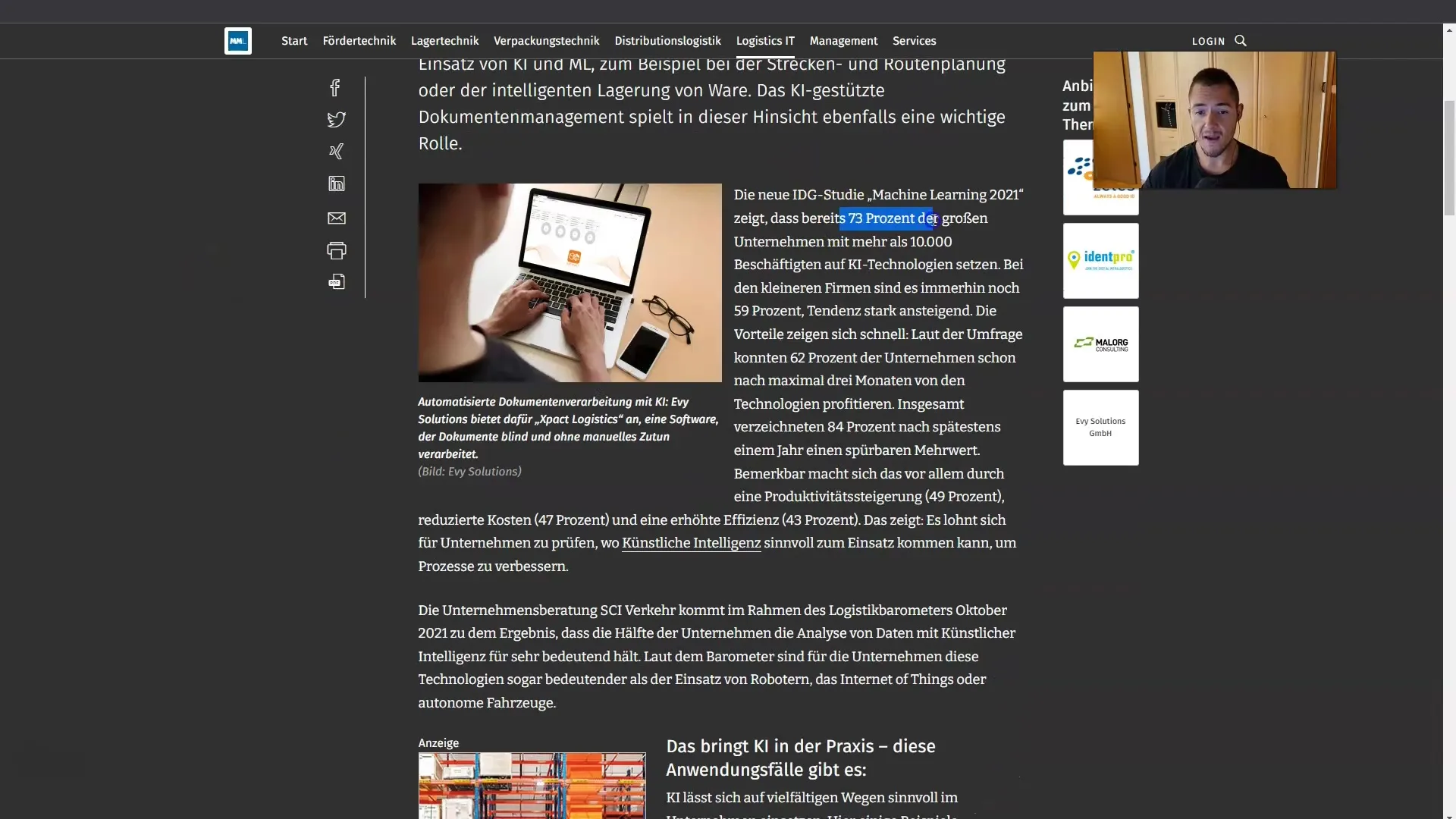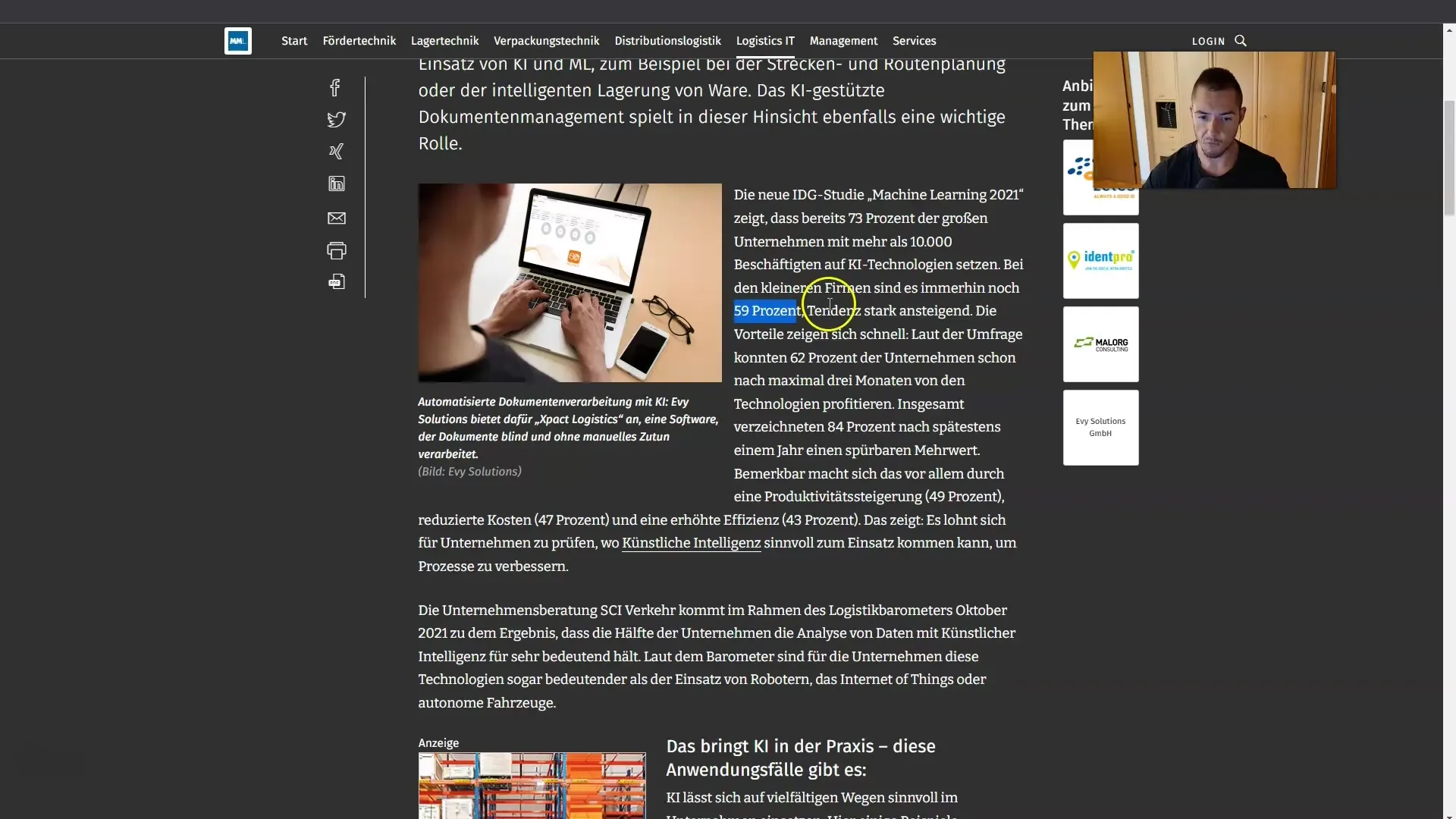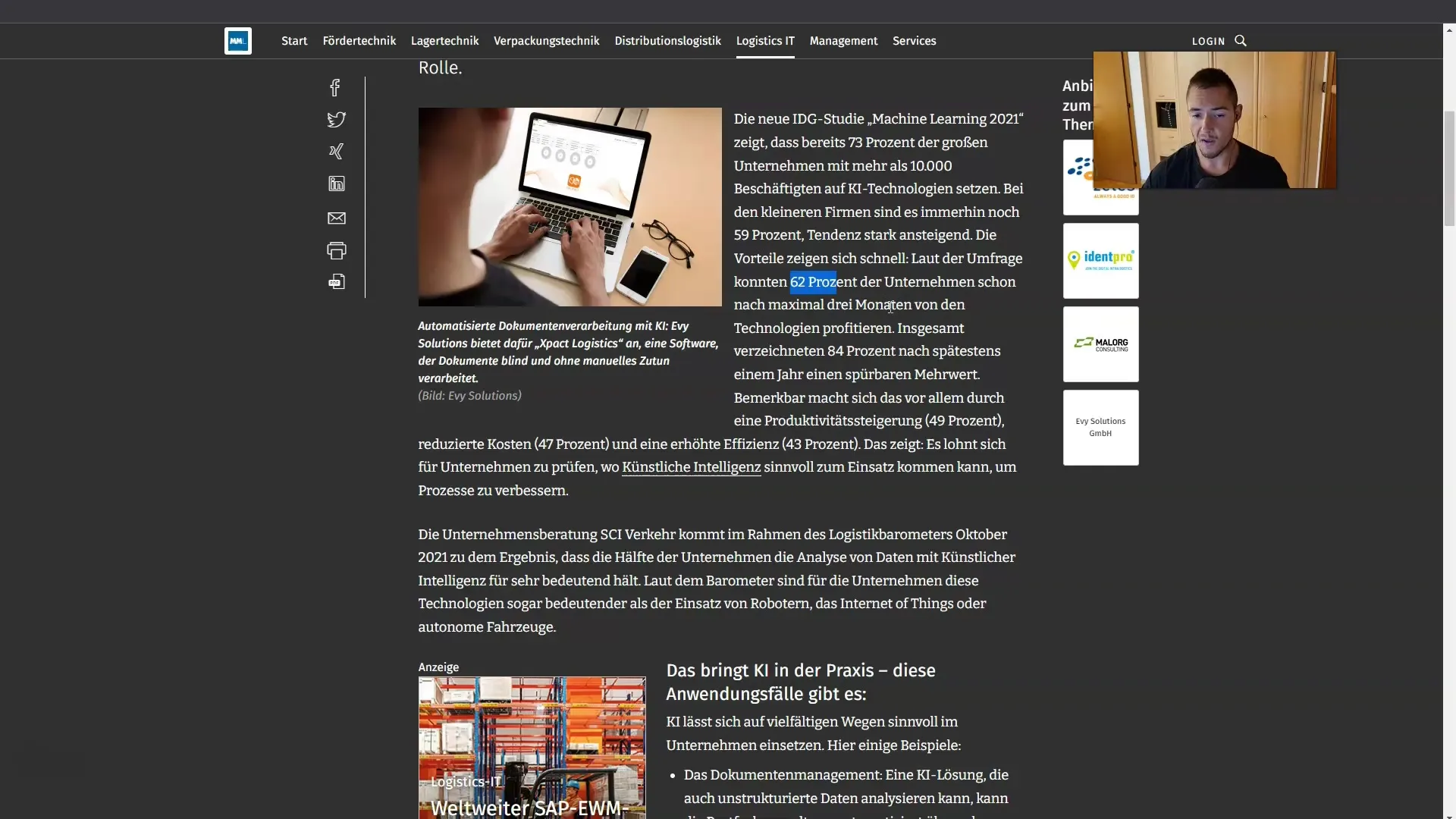The role of artificial intelligence (AI) is becoming increasingly important in various industries. Especially in the logistics industry, which is constantly seeking efficiency and productivity, AI plays a crucial role. In this comprehensive tutorial, you will learn how companies can use AI to optimize their processes. We will explore various applications of AI in logistics and provide you with a step-by-step guide on how to effectively utilize these technologies in your company.
Key Insights
- Using AI in logistics leads to a significant increase in productivity, cost reduction, and efficiency improvement.
- Large logistics companies like DHL are already using AI-powered tools to create learning videos for employees and facilitate training.
Step-by-Step Guide
1. Understanding the Benefits of AI in Logistics
The first step is to understand the benefits of AI. Artificial intelligence can help improve processes and increase efficiency in logistics. According to an article by Logistikvogel, 3% of companies with more than 10,000 employees already use AI in logistics. These companies report an increase in productivity within three months, with 84% believing that AI provides long-term value.
2. Identifying Areas of Application
To fully leverage the benefits, identify specific areas of application in your company. AI can be used in warehouse management, route planning, and customer service. Also, consider the use of avatars for training purposes. In large logistics companies that operate globally, it is important that training can be effectively conducted in multiple languages.
3. Implementing AI-Powered Learning Videos
An important step in optimizing your logistics processes is creating AI-powered learning videos. These videos can be extremely helpful for employees who perform similar tasks repeatedly. Companies like DHL are already successfully using this method. The avatars help in offering training in different languages, ensuring that all employees are well-informed regardless of their language.

4. Training AI Systems
After creating the learning videos, the next step is to train your AI systems. This involves collecting and inputting data to optimize the systems and ensure they work efficiently. AI systems need to be continuously improved and updated to achieve the best results.

5. Monitoring and Improvement
The final step is to monitor progress and make adjustments as needed. You should regularly gather feedback from employees and adjust training concepts to ensure that AI-powered programs are effective and result in the desired increase in productivity.

Summary
This guide covered the essential steps for implementing AI in the logistics industry. From identifying the benefits to creating learning videos, training, and monitoring AI systems, the right approach can bring significant efficiency gains to your company. Remember that employee training is key to success.
Frequently Asked Questions
What are the key benefits of AI in logistics?The main benefits are increased productivity, reduced costs, and improved efficiency.
How do companies use AI for training?Companies use AI-powered avatars to create multilingual learning videos that help employees better understand processes.
What role do avatars play in logistics?Avatars help provide training content in different languages without requiring a supervisor to train each individual.
How can I monitor progress?Regular feedback from employees and adjustments to training concepts are essential.


